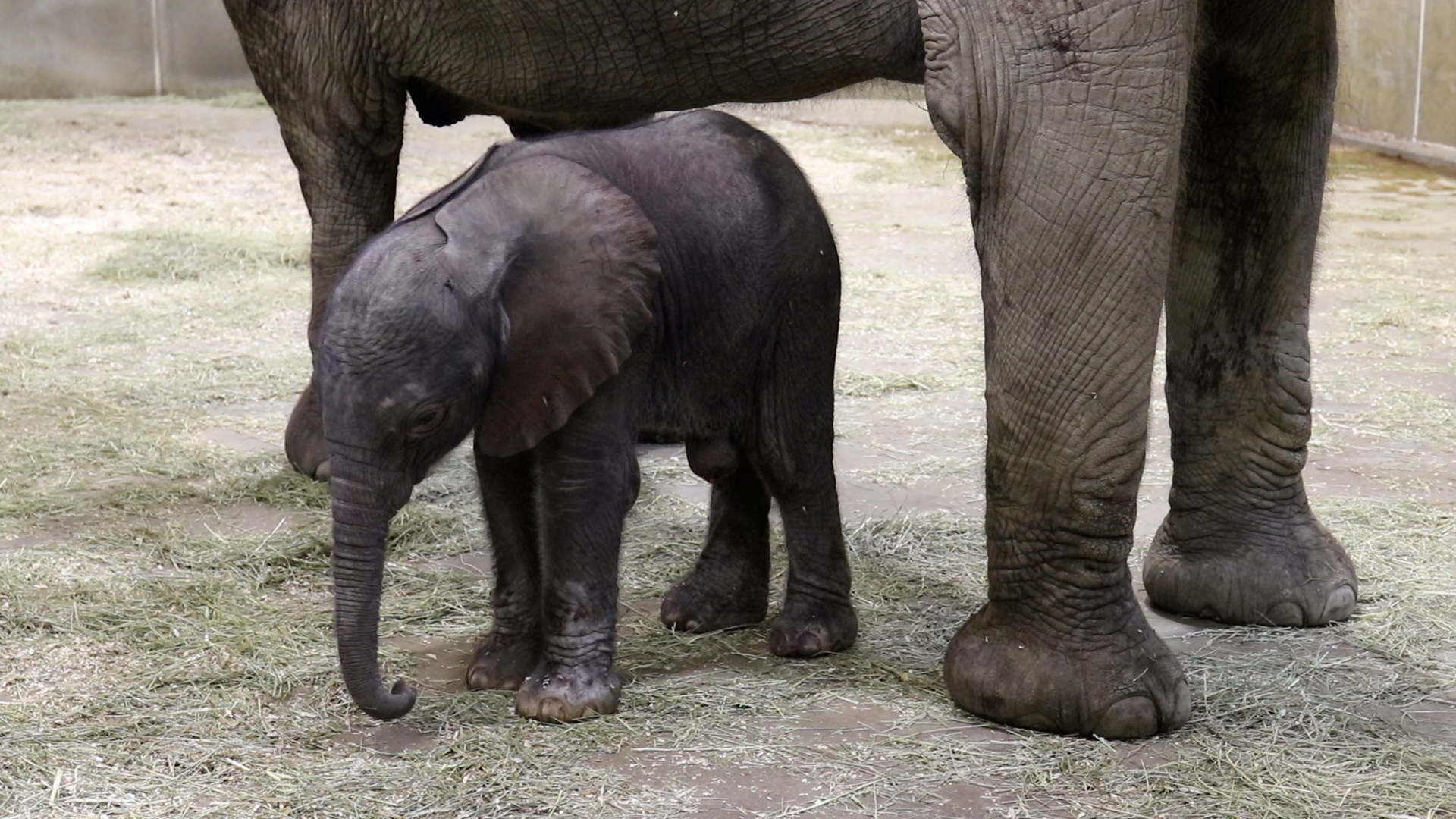Summary of Indianapolis Zoo Welcomes Baby Elephant Calf:
The Indianapolis Zoo had a historic Labor Day this year when Zahara, a first-time elephant mother, gave birth to a male calf. This was the first elephant, either African or Asian, to be born through artificial insemination to a mother who was also born through the same procedure. The elephant care staff had been staying overnight since Friday, when they were alerted to the impending birth through routine blood tests. The calf arrived only 20 minutes after the initial labor signs, weighing 262 pounds. Zahara is a very attentive and gentle mother, and she and the baby are doing well. This calf will begin a third generation in the zoo’s elephant herd, and the zoo is recognized as a leader in African elephant reproduction. By visiting accredited zoos like the Indianapolis Zoo, guests are helping to protect and conserve wild elephant populations.
Summary:
– The Indianapolis Zoo celebrated the birth of a baby elephant calf, born to first-time mother Zahara through artificial insemination.
– The calf, weighing 262 pounds, is healthy and active, and Zahara is an attentive and gentle mother.
– This birth marks the beginning of a third generation of elephants in the Indianapolis Zoo’s herd.
– The Indianapolis Zoo is a leader in African elephant reproduction and contributes to the fight against poaching and the conservation of elephants in the wild through visitor support.
The Indianapolis Zoo Welcomes Baby Elephant Calf
Labor Day was historically significant for the Indianapolis Zoo as it welcomed the birth of a baby elephant calf. What makes this birth extraordinary is not just the arrival of a new member to the African elephant herd but the fact that this calf was born through artificial insemination to a mother who was also born through the same procedure, making it the first elephant in the world to be born in such a manner, regardless of species.
The elephant care staff at the Indianapolis Zoo were prepared for the birth, as routine blood tests had alerted them to the impending arrival. Assistant Curator of Elephants, Niki Kowalski, reported that the calf debuted only 20 minutes after the initial signs of labor. Weighing in at a healthy 262 pounds, this little one is already proving strong and lively. It is worth noting that the average birthweight for African elephant calves is 226 pounds, and male calves tend to weigh more than females. Within 10 minutes of birth, the calf was already standing, exhibiting its resilient nature. Both mother and baby are doing well and have formed a strong bond. It was truly a remarkable way to celebrate Labor Day!
The first-time mother, Zahara, has displayed remarkable attentiveness and gentleness towards her newborn. She is constantly checking on him, ensuring his well-being. Although nursing is a new experience for Zahara and the calf, they quickly adapt and learn together. According to Kowalski, the baby boy is adventurous and playful, exhibiting an active and curious nature. He shows an interest in the elephants and humans around him, fostering a sense of wonder in those who witness his behavior.
Before giving birth, Zahara washed the youngest elephant at the Indianapolis Zoo at 17 years old. This new addition marks the seventh calf to be born at the zoo. President & CEO Robert Shumaker expressed his excitement, stating that this calf represents the beginning of a third generation within the herd. The Indianapolis Zoo has gained recognition for its achievements in African elephant reproduction, having successfully conceived and birthed the world’s first and second African elephants through artificial insemination in 2000. Multi-generational herds are vital for elephants, providing a natural and healthy social setting. Additionally, these herds play a crucial role in educating zoo visitors and fostering a conservation ethic that supports the survival of elephants in the wild.
By visiting zoos accredited by the Association of Zoos and Aquariums, guests actively contribute to the fight against poaching and the preservation of elephants. The support from visitors enables the implementation of crucial field conservation projects, research initiatives, habitat restoration programs, and the reduction of human-elephant conflicts. Through community-based initiatives and the dedication of accredited zoos, the protection of wild elephant populations becomes a reality. Each visitor becomes a part of a collective effort that works toward the survival of these magnificent creatures.
In conclusion, the Indianapolis Zoo’s celebration of the birth of a baby elephant calf offers a glimpse into the marvel that is the animal kingdom and highlights the extraordinary efforts undertaken by zoos in the realm of conservation. The arrival of this calf showcases the Indianapolis Zoo’s commitment to African elephant reproduction and the importance of multi-generational herds. Visitors support their local zoos and contribute to the fight against poaching, wildlife conservation, and the preservation of exotic species. The Indianapolis Zoo’s newest addition not only brings joy and wonder to those who visit but also serves as a reminder that every individual can make a difference in protecting wildlife and their habitats.

